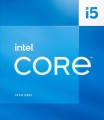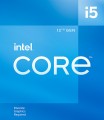Code name
This parameter characterizes, firstly, the technical process (see above), and secondly, some features of the internal structure of processors. A new (or at least updated) codename is introduced to the market with each new CPU generation; chips of the same architecture are "coevals", but may belong to different series (see above). At the same time, one generation can include both one and several code names.
Here are the most common Intel codenames today:
Cascade Lake-X (10th gen),
Comet Lake (10th gen),
Comet Lake Refresh (10th generation),
Rocket Lake (11th generation),
Alder Lake (12th generation),
Raptor Lake (13th generation),
Raptor Lake Refresh (14th generation).
For AMD, this list includes
Zen+ Picasso,
Zen2 Matisse,
Zen2 Renoir,
Zen3 Vermeer,
Zen3 Cezanne,
Zen4 Raphael and
Zen4 Phoenix.
Cores
The number of physical cores provided in the processor design. The core is the part of the processor that is responsible for executing the instruction stream. The presence of multiple cores allows the CPU to work simultaneously with several tasks, which has a positive effect on performance. Initially, each physical core was intended to operate with one thread of commands, and the number of threads corresponded to the number of cores. However, today there are many processors that support multi-threading technologies and are capable of executing two streams of commands on each core at once. For more information about this, see “Amount of threads”.
Desktop processors
have 2 cores (2 threads), as a rule, typical for budget models.
2 cores (4 threads) and
4 cores are typical for inexpensive mid-class solutions.
4 cores (8 threads),
6 cores,
6 cores (12 threads),
8 cores - a strong mid-range.
8 cores (16 threads),
10 cores,
12 cores,
16 cores and
more are characteristic features of advanced models, including processors for servers and workstations.
At the same ti
...me, it is worth considering that the actual capabilities of the CPU are determined not only by this parameter, but also by other characteristics - primarily by series and generation / architecture (see the corresponding paragraphs). It is not uncommon for situations where a more advanced and/or new dual-core processor turns out to be more powerful than a quad-core chip from a more modest series or an earlier architecture. So it makes sense to compare CPUs by the number of cores within the same series and generation.Efficient
The number of energy-efficient Efficient Cores (or E-Cores) in Intel processors since the Alder Lake generation. They are relatively small and can be added in clusters of four — on a silicon chip, such groups occupy the same area as one high-performance core. E-cores work out basic background loads.
Threads
The number of instruction streams that the processor can execute at the same time.
Initially, each physical core (see "Number of cores") was intended to execute one thread of instructions, and the number of threads corresponded to the number of cores. However, there are many processors today that support Hyper-threading or SMT (see below) and can run two threads on each core at once. In such models, the number of threads is twice the number of cores — for example, 8 threads will be indicated in a quad-core chip.
In general, a higher number of threads, other things being equal, has a positive effect on speed and efficiency, but increases the cost of the processor.
Efficient-core Base
The base clock rate of the energy-efficient E-cores for Intel APUs starting from the 12th generation (Alder Lake).
Performance-core Max
Maximum Turbo clock speed for Performance Cores from the Intel Hybrid Processor League.
Efficient-core Max
Peak clock rate for the Efficient cores from Intel processors based on hybrid architecture.
L3 cache
The amount of cache level 3 (L3) provided in the processor.
Cache is an intermediate memory buffer into which the most frequently used data from RAM is written when the processor is running. This speeds up access to them and has a positive effect on system performance. The larger the cache, the more data can be stored in it for quick access and the higher the performance.
Thermal Dissipation Max(TDP)
Different processors have different temperature limits. The peak value of heat dissipation in watts is indicated when the processor is operating under load conditions. The higher the heat dissipation rate, the more powerful the cooling system must be selected and the higher the requirements for the power subsystem on the computer motherboard. For more information on heat dissipation (TDP), see the relevant paragraph.

